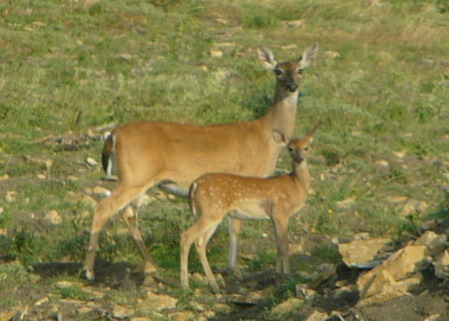In some circles, you will still hear people talk about the old barren doe that lives in a particular part of the ranch. This line of thinking blames poor fawn production on the idea that many older does do not get pregnant. In reality, if the doe isn’t bred during the first estrous period, she will be receptive again 28 days later. This explains the high breeding success in white-tailed deer, even when bucks are scarce. It was recorded in one Texas study, that on average, 92 of every 100 does sampled were pregnant.
White-tailed deer are known for producing twins. In the previously mentioned study, over half of the does examined had twins. Triplets, however, were not common, and the occurrence of triplets was less than two percent. Quadruplets didn’t show up at all in the study. There were more male fetuses than female fetuses. Males represented 56 percent of the unborn fawns over the three years of the study.
An average sample of ten does had 15 fawns, or 1.5 fetuses per doe. In some parts of the state, though, deer numbers build up slowly. Failure to breed is not a problem, so where do the fawns go? Life is full of dangers for a fawn, and food and cover (the fawning habitat) is the difference in living and dying for fawns. In many parts of the state, predation is severe unless there is adequate hiding cover for young fawns. Imported fire-ants are a problem for fawns in heavily infested areas, but their impact can often mask the real problem. Adequate nutrition is often limiting, and if fawns make it past fire-ants and predators to weaning, they still face the challenge of finding food and cover.
Fawn survival depends primarily on habitat quality. Malnutrition and associated problems are probably responsible for poor fawn survival in much of the state. Dry conditions aggravate the problem of inadequate food. “Empty belly disease” is the most limiting factor on whitetails in Texas. Delayed breeding could cause fawns to be born late, which would be a disadvantage on ranges where food is scarce.


Good points about the importance of adequate food!